Bees are insects. Together with ants and wasps they belong in the insect group Hymenoptera. You may be surprised that there are over 20,000 known species of bees in the world. Bees in East Africa include carpenter bees, Amegilla bees, stingless bees, longhorn bees, and honeybees.
These bees vary from each other physically—being of different sizes and shapes, and in their behaviour. Some wild bees nest in tree hollows, others build their nests underground; some will visit a variety of flowers to feed, others specialise, and feed from only one, or two families of flowers; many of these bees are active most of the day, while others may only be active in the early morning, or evening.
Most wild bees are solitary, though some like honeybees and stingless bees are social. Wild bees mostly collect pollen and nectar from flowers but there are those that also collect oils, and other substances from flowers.
Other bee families commonly found in East Africa are the leafcutter bees, which use leaves to line their nests, and the halictid bees, which is a large, diverse family of bees.
Wild bees pollinate about two- thirds of the vegetables and fruits grown in East Africa, and are one of the most important groups of pollinators for all flowering plants in the world.
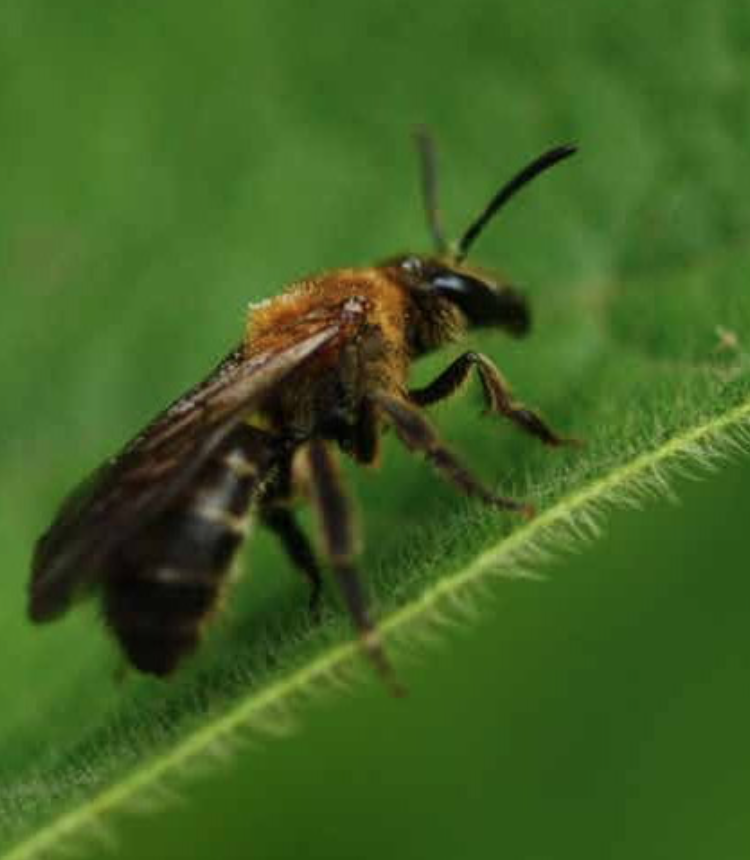
Long-faced bee (Thrincostoma sp.) resting on a leaf at the edge of Kakamega Forest.
Most wild bees are solitary and females forage and provision nests on their own.
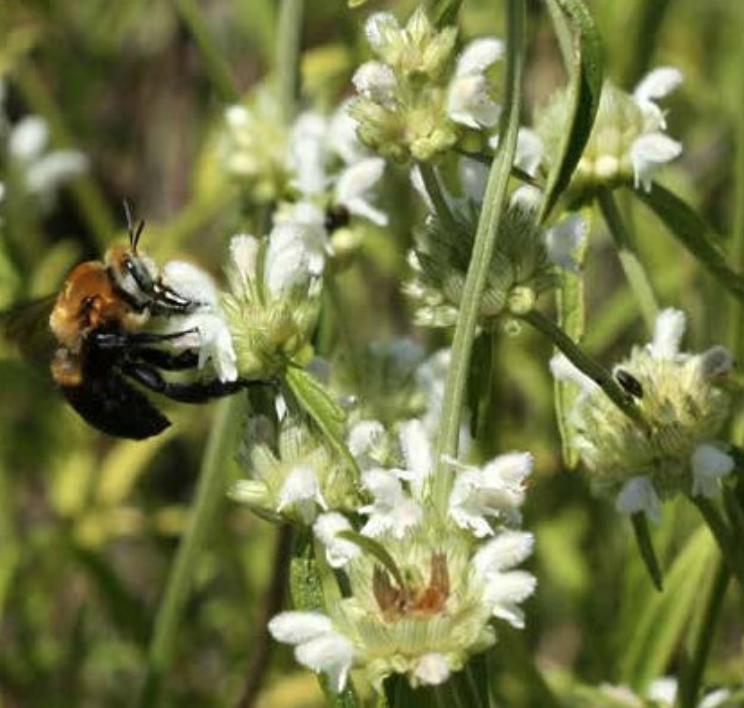
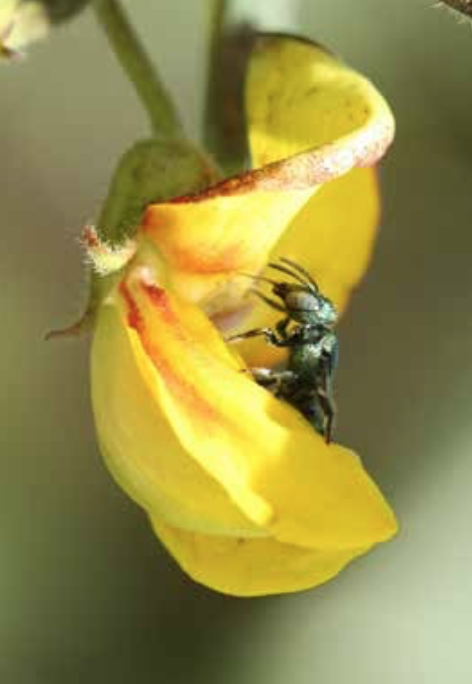

Bees are the most diverse group of insect pollinators. TOP, LEFT TO RIGHT
- An Amegilla on Leucas sp.2. Small carpenter bee (Ceratina sp.) on legume. 3. Amegilla bee approaches some Cleome flowers,
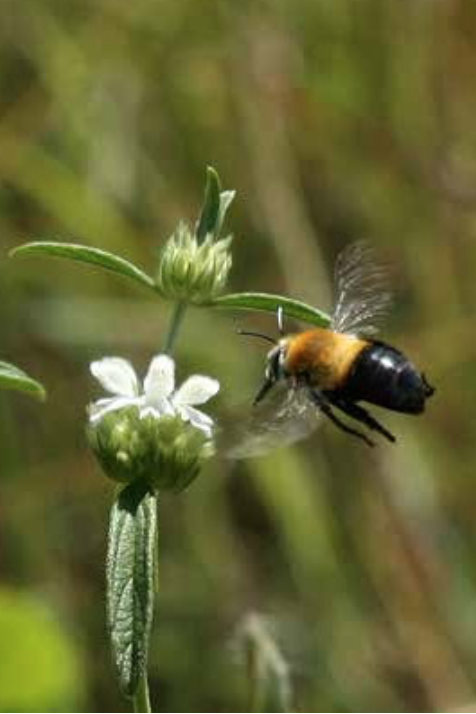
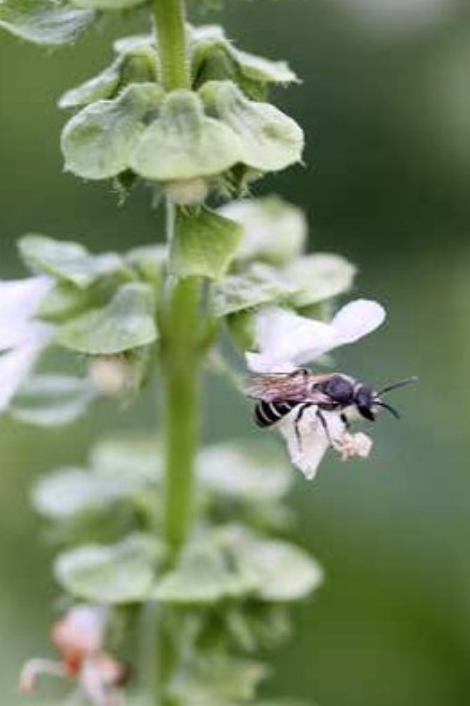
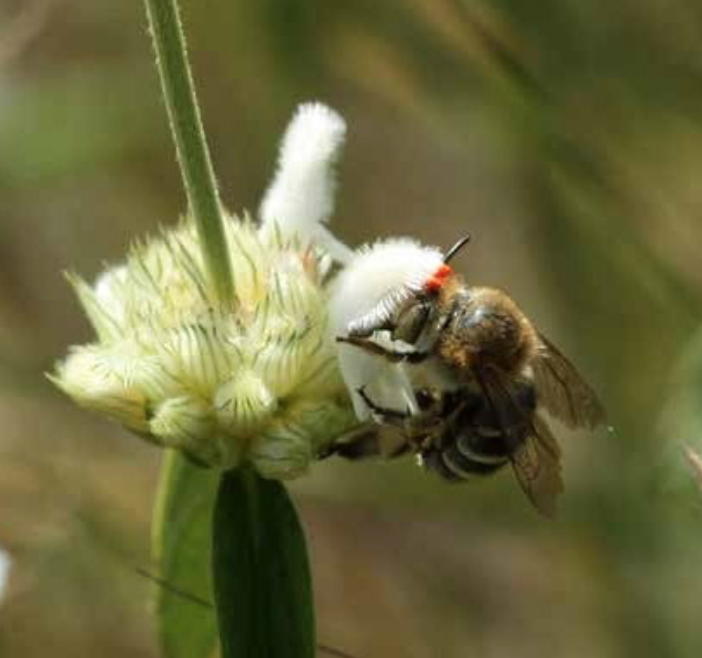
1. Amegilla spp. on Leucas. 2. Halictid bee on cultivated basil. 3. Amegilla spp. on Leucas.
Honeybees
There are thousands of known species of bees in the world.
But when most people think of a bee, they think of a honeybee. Honeybees, Apis mellifera, are just one kind of bee. They are in the family Apidae. They live socially in large colonies, and are commonly kept in domestic beehives, or are found in the wild inside hollow trunks.
Honeybees visit flowers to feed on nectar and pollen, and collect these foods to take back to the hive. Honeybees make use of nectar to produce honey. It takes four worker honeybees their entire lives to produce just one teaspoonful of honey. From honeybees come other useful products including beeswax, propolis, royal jelly, and bee venom.
There is a long history between honeybees and humans.
African rock art depicting people harvesting wild honey date to thousands of years ago. Indeed, Honeybees originate in East Africa, and like humans migrated out of Africa to the rest of the world.
There are more wild varieties of honeybees in Africa than anywhere else in the world. In Kenya, there are two different kinds of honeybees:
Common Honeybee
This more familiar orange-and- black coloured bee is typically seen in grassland, bush, coastal, and forest areas.
Mountain Honeybee
This is a dark, chocolate- coloured honeybee that is adapted to the high altitude areas of Mount Kenya, the Aberdare range, and Mount Elgon where it can be found.
Honeybees pollinate many crops, herbs, wildflowers, and trees.
Honeybees have developed an exceptional method of communication through movement. When a honeybee returns to the hive, and wants to inform her fellow bees of how to find a particular area with flowers, she performs a special dance called a ‘waggle’ dance. This dance conveys three different things about a patch of wildflowers to the other worker honeybees: the direction (relative to the sun and hive), the distance (from the hive to the wildflowers), and the quality of the food (nectar and pollen).
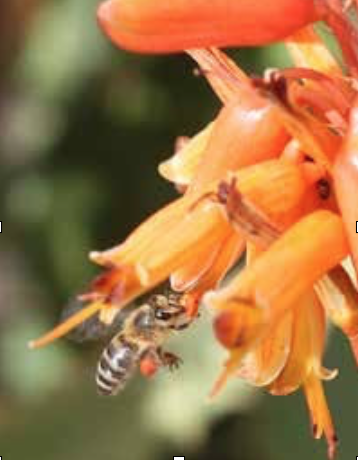
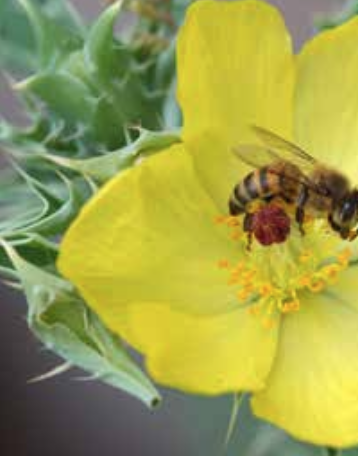

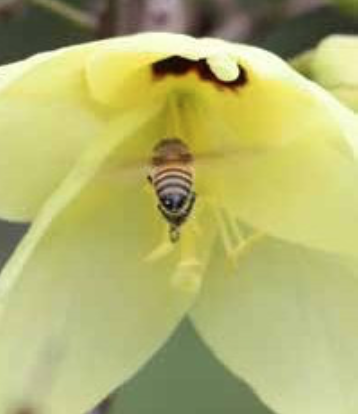

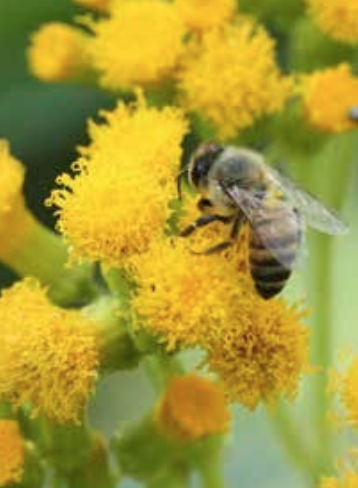
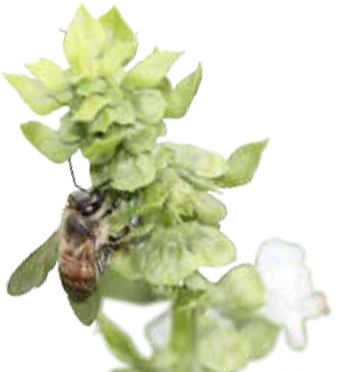
Honeybees on different flowers. TOP, LEFT TO RIGHT
Common honeybees (Apis mellifera scutellata) on Aloe sp., and Argemone mexicana.
MIDDLE, LEFT TO RIGHT Mountain honeybee on Leucas sp., common honeybee on Bauhinia sp.
BOTTOM, LEFT TO RIGHT Common honeybees on Euphorbia sp., a member of the daisy family–Compositae sp., and cultivated basil (image cutout).
Stingless Bees
Like the honeybee, stingless bees are social, and live in colonies, each having a queen and workers. They are also called ‘Sweat Bees’ as they are attracted to the salt in human sweat, and hover around the ears and eyes of people in hot areas.
Stingless bees are smaller than honeybees, and live in hollow trees, rocks, and even termite mounds. They often make vertical tubes from resin at the entrances to their nests. Inside their nests, they have special pots in which they store honey, and separate areas for storing pollen, and housing the larvae.
There are places in East Africa, with a tradition of keeping stingless bees but the knowledge is not widespread. Many people simply harvest stingless bee nests by breaking open the nest, which results in the entire colony being killed. This is very destructive, and has led to the disappearance of stingless bees from some areas.
Stingless bees are very important pollinators as they rely entirely on flowers for nectar and pollen to feed their larvae. They pollinate many forest and dryland plants, and are also valued pollinators of strawberries, mango, and avocado.
Many people simply harvest stingless bee nests by breaking open the nest, which results in the entire colony being killed.
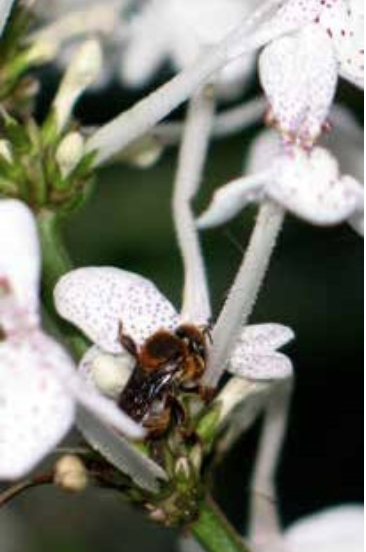
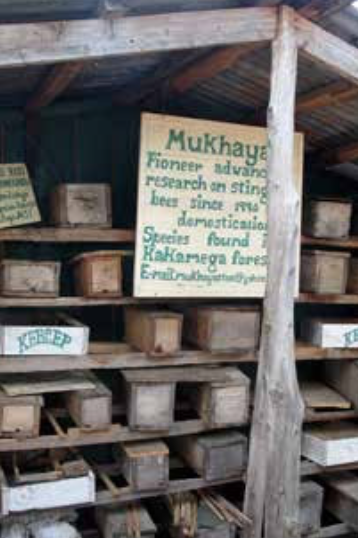
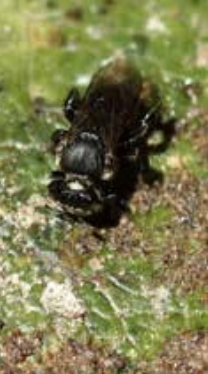
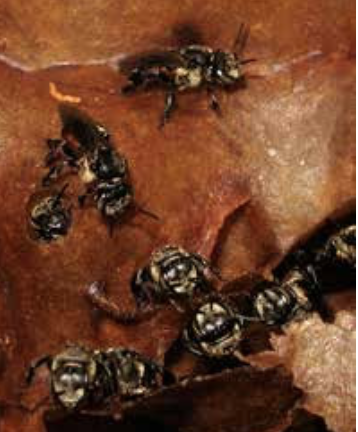
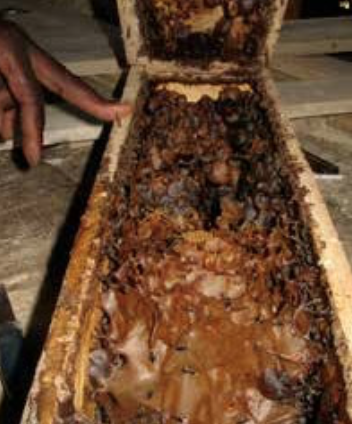
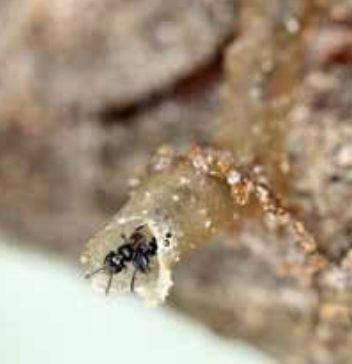
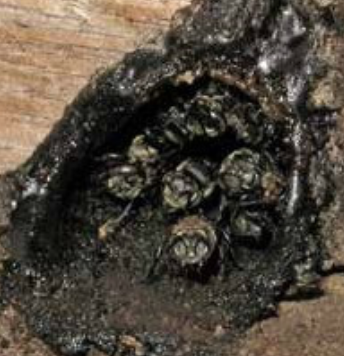
Stingless bees.
TOP, LEFT TO RIGHT Stingless bee, Meliponula bocandei, robbing nectar from a rainforest Barleria flower, stingless bee hives for honey production at Kakamega Forest, and stingless bee drinking moisture from leaf.
MIDDLE, LEFT TO RIGHT Close-up views inside the nest of the stingless bee Meliponula ferruginea.
BOTTOM, LEFT TO RIGHT Small stingless bee (Hypotrigona sp.), and large stingless bees–at their nest entrances.
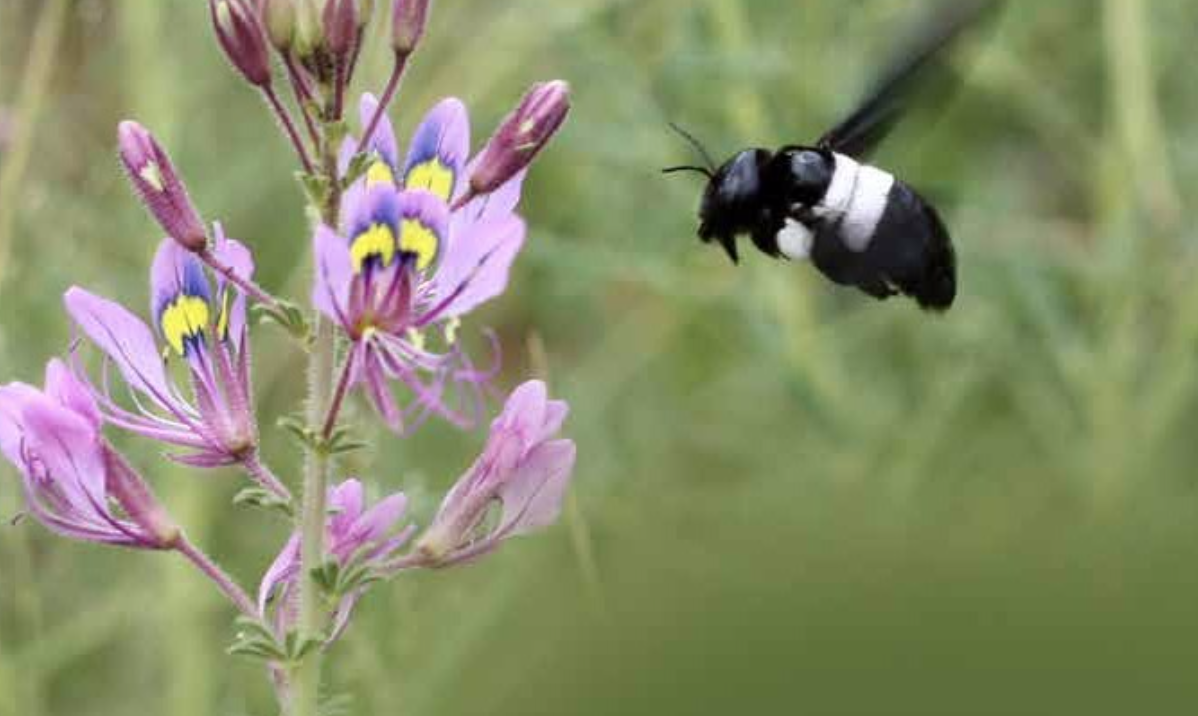
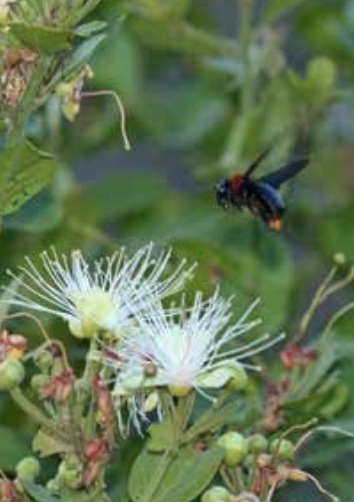
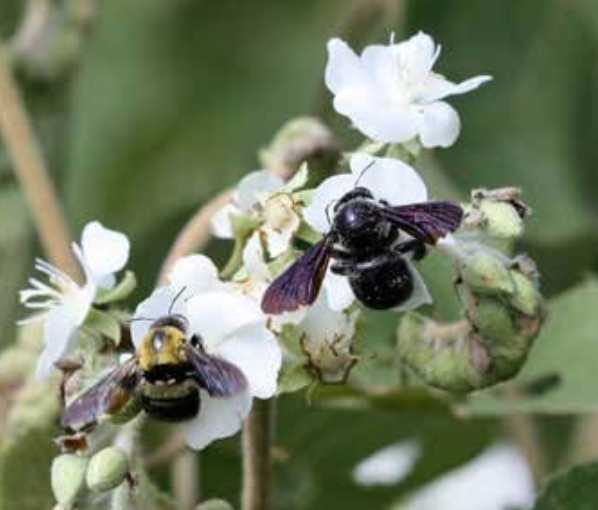
Carpenter bees.
TOP, LEFT TO RIGHT Carpenter bee, Xylocopa flavorufa, approaches a flowering Maerua, carpenter bees on a coastal Sterculiaceae sp.
MIDDLE, LEFT TO
RIGHT Carpenter bee on the flowering Sterculiaceae–note the large amounts of pollen on the bee’s body, Blue-eyed carpenter bee on Crotolaria sp. Carpenter bee approaching wild basil (Ocimum sp.).
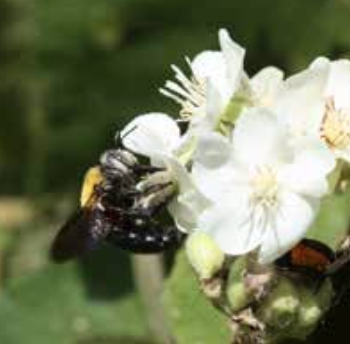
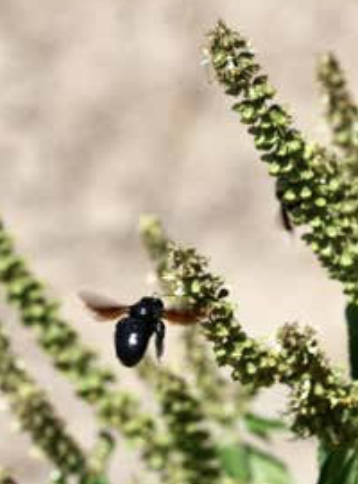

Leafcutter bees
Leafcutter bees are named for their habit of cutting out circular pieces of leaves from cultivated plants. Leafcutters are stocky, robust bees with large eyes. They range in colour from grey to brown, and can be boldly marked with orange, white, red, or yellow. It is with the underside of their abdomen that they transport pollen. When this is fully packed it is a bright patch of colour on their bellies— readily visible as they forage from flowers.
Mass-flowering trees such as acacias are among the wide range of plants visited by leafcutter bees. Wildflowers are visited for pollen and nectar, and leafcutter bees are especially efficient at ‘tripping’ the flowers of Crotolaria, Indigofera, Tephrosia, and other legume species.
Nests of leafcutter bees are distinctive and unique, constructed from overlapping circles of cut pieces of leaf taken from a variety of plants.
Generally those having fairly flat, smooth leaves are chosen, and are glued together with resin and waxy secretions. Nests can often be found on furniture, walls of buildings and other man-made structures.
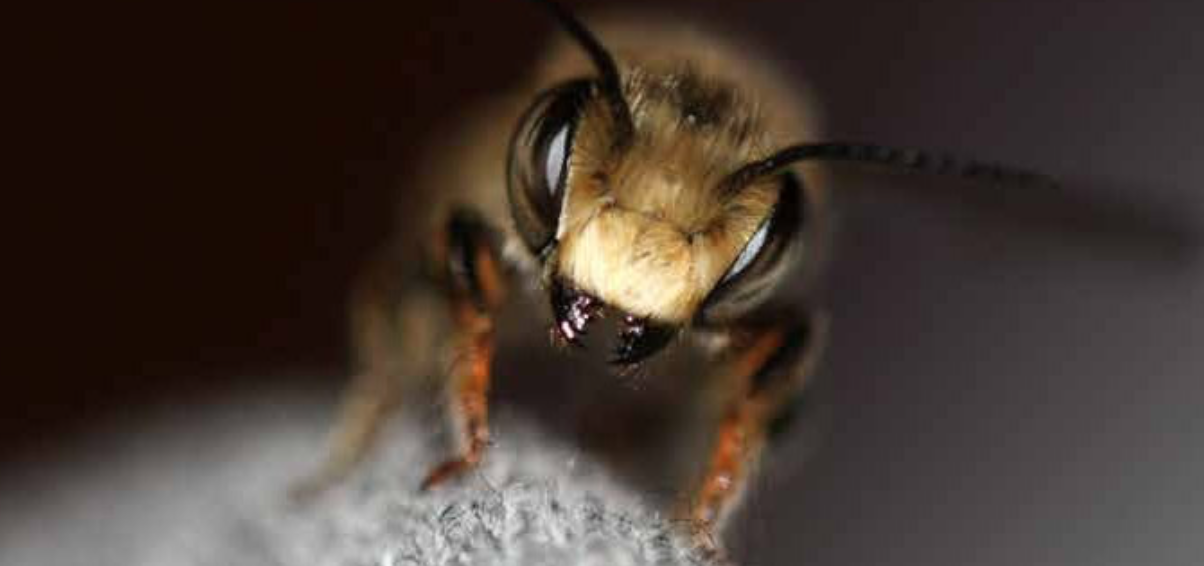
Close-up of a freshly emerged leafcutter bee.
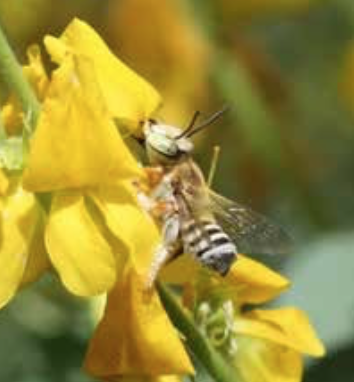
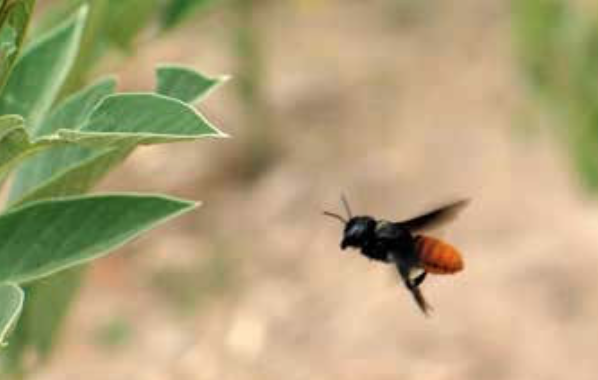
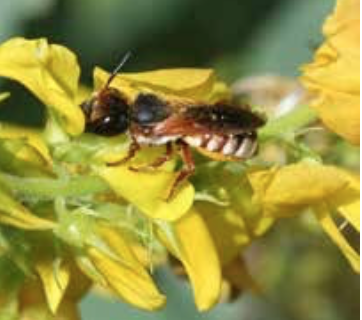

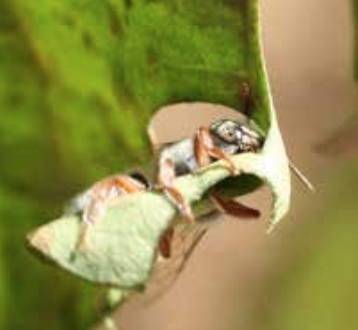

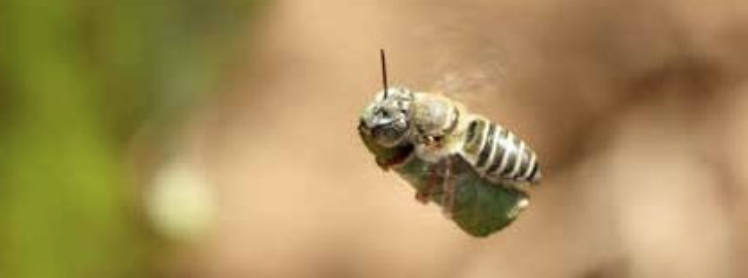
Various species of leafcutter bees in action.
TOP, LEFT TO RIGHT Megachile sp. on Crotolaria, Gronocera hovering near pigeonpea.
MIDDLE, LEFT TO RIGHT Leafcutter bee gripping flower with its mandibles, leafcutter bee on Crotolaria.
LOWER MIDDLE, LEFT TO RIGHT Leafcutter bee cutting leaf-circles from a capsicum, large leafcutter bee approaches Crotolaria brevidens–note the large patch of pollen carried on the bee’s underside.
BOTTOM, LEFT TO RIGHT Leafcutter bee carrying leaf to nest.
Halictid Bees
This is a very large and diverse family of bees. They
are small to medium-sized bees, and are often the most common bees encountered visiting flowers. About one-third of bees in East Africa are halictids.
Halictid bees nest in cavities, primarily in the ground as well as in wood. Halictids also have a wide range of social behaviour. While the vast majority are solitary, a few
halictid bees have variable levels of social organisation including communal nesting, sharing nests, semi-social, and even those almost fully eusocial.
Eusocial bees are those like honeybees, with sterile workers who have given up reproducing, and instead support larvae from eggs laid by a fertile queen. This means that they are divided into a series of specialised castes.
Common genera of halictid bees in East Africa include Lipotriches, Nomia, Pseudapis, Lasioglossum Patellapis, Seladonia, Thrincostoma, Nomioides, Cellariella, and Ceylalictus. The biology, behaviour and diversity of most halictid bees in East Africa remains poorly studied.

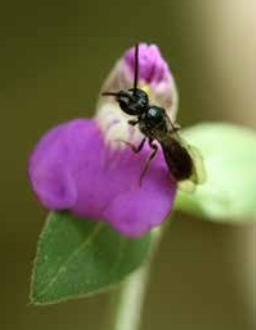
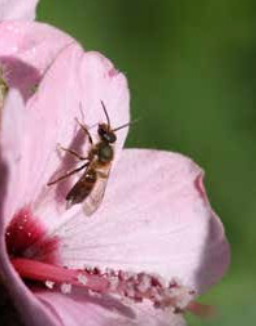

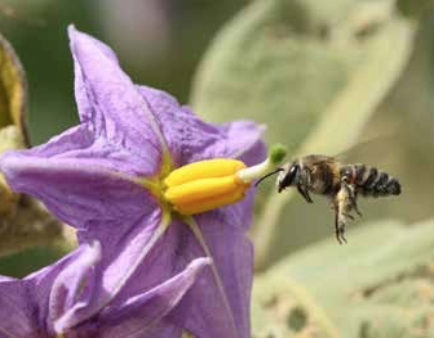
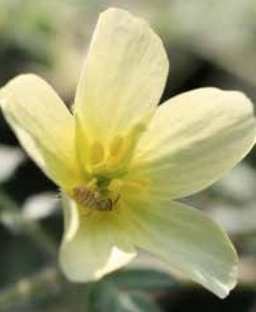
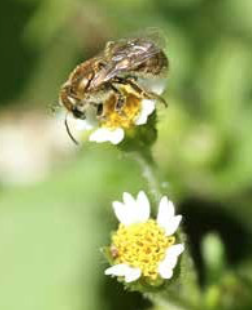
Halictid bee diversity.
TOP, LEFT TO RIGHT Lasioglossum sp. on Justicia, long-faced bee Thrincostoma sp. on a member of the hibiscus family,
MIDDLE, LEFT TO RIGHT Systropha sp. at an Ipomoea flower, Nomia sp. approaching Solanum sp.
BOTTOM, LEFT TO RIGHT Tiny Nomioides in a flower of Tribulus terrestris.,Seladonia sp. visiting Bidens sp